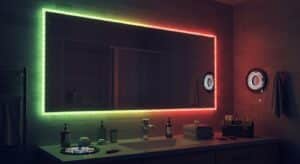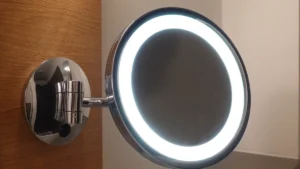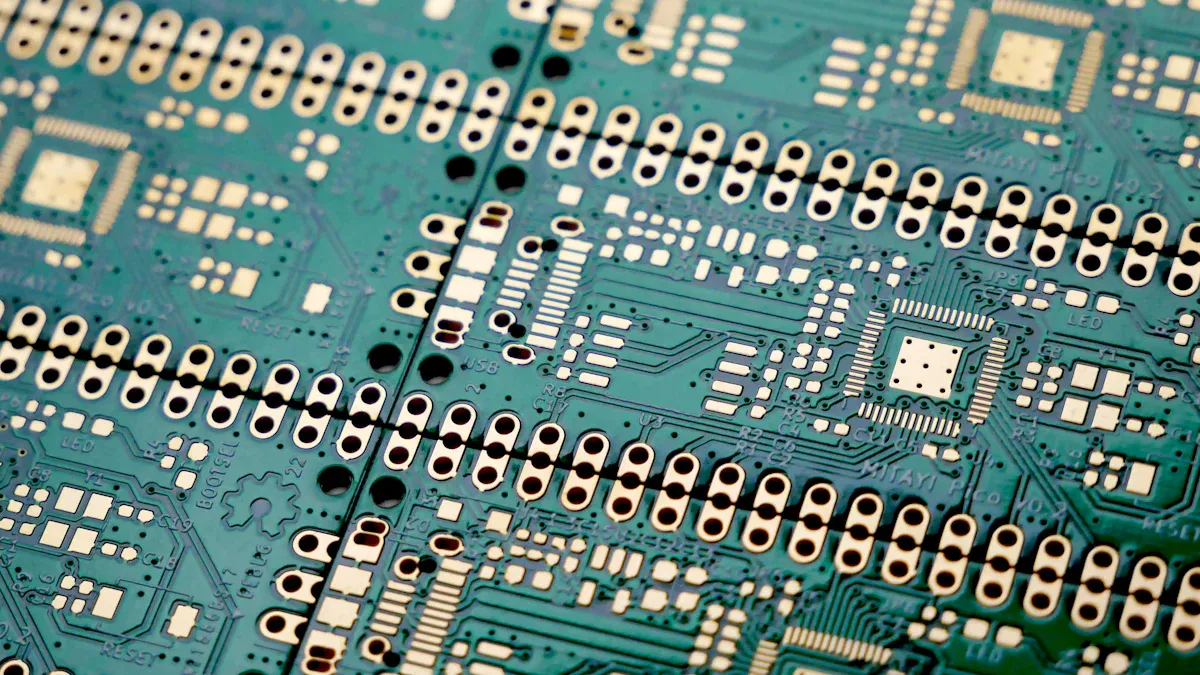
Have you noticed how gadgets get smaller but stronger? That’s because of the amazing smd module. These small parts are changing lighting and screens. New COB LED strips are 20-30% brighter than old LEDs. They help homes and businesses save energy and shine brighter. Picture a big store in New York getting 35% brighter but using 25% less energy. This happens with smarter lights. It’s not just about saving energy. It’s about making the world better and greener.
Key Takeaways
SMD modules make devices smaller and stronger, with brighter screens.
Using SMD technology makes screens sharper and colors more vivid.
SMD LEDs use up to 80% less energy than old bulbs. This saves money and helps the planet.
Smart lights with SMD modules adjust to your needs. They make spaces comfy and save energy.
The future of SMD includes cool things like AI displays and uses in healthcare and AR/VR.
The History of SMD Modules
Early development and adoption of SMD LEDs
Have you thought about how screens became so clear and thin? It began with surface-mount device (SMD) technology. Unlike older LEDs, SMD modules let tiny LEDs sit on circuit boards. This made screens slimmer, lighter, and more powerful. In the 1990s, blue LEDs changed everything. Full-color screens became possible, leading to the bright displays we enjoy now.
At first, SMD LEDs were used in factories and industries. As tech improved, they appeared in gadgets like phones and TVs. These small parts made screens brighter and saved energy. They also helped create high-quality LED displays. Now, we see them in billboards, theaters, and more.
Transition from traditional LEDs to SMD technology
Switching from old LEDs to SMD technology was a big deal. Older LEDs were large and hard to design with. SMD modules were smaller and easier to use. This change helped make sharper, more colorful screens.
Over time, displays became clearer and more realistic. SMD technology allowed more LEDs to fit in tiny spaces. This improved picture quality and used less power. Today, SMD LED screens are the best choice for their great performance and energy savings.
Key milestones in the evolution of the display industry
The history of SMD modules has many important moments. Here’s a quick look at some key events:
Year/Period | Milestone Description |
|---|---|
Mid-1990s | Blue LEDs introduced, making new screen designs possible. |
2008 | New panel designs like ROE’s Black Onyx changed markets. |
2012 | Standard 500 mm x 500 mm panels and control boxes launched. |
Ongoing | Smaller LED packages boost high-resolution screen markets. |
These events show how far display technology has come. From blue LEDs to today’s sharp screens, each step made visuals better.
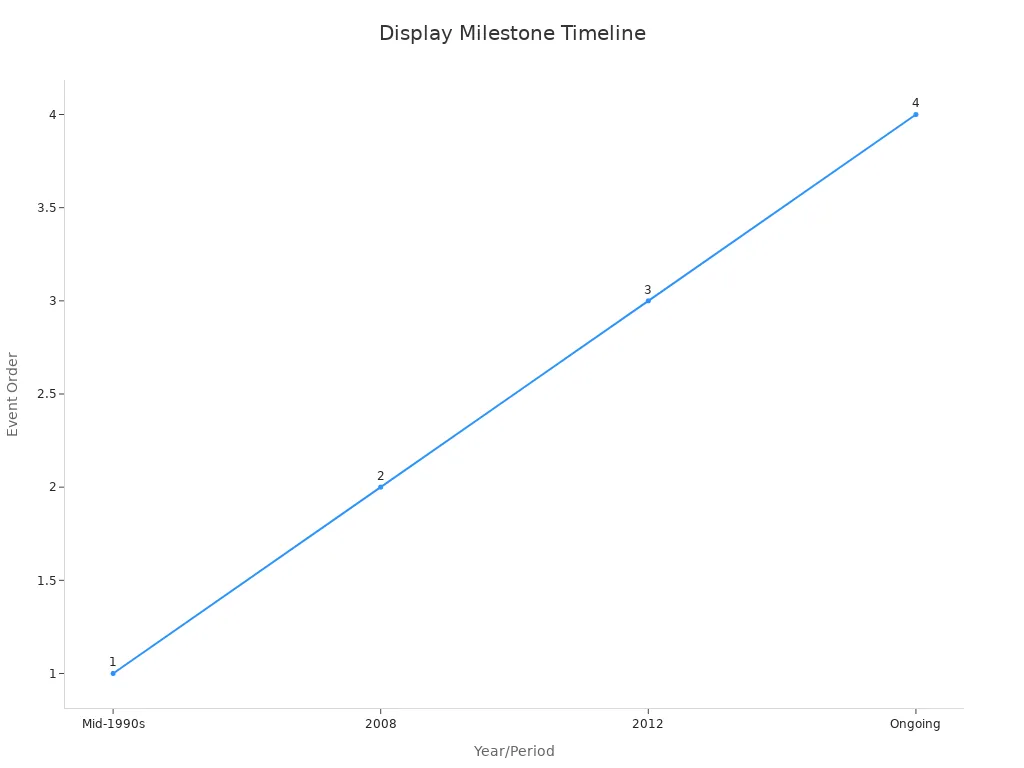
As you can see, SMD modules have changed a lot over time. They’ve improved displays and changed how we use technology every day.
Innovations in SMD LED Technology
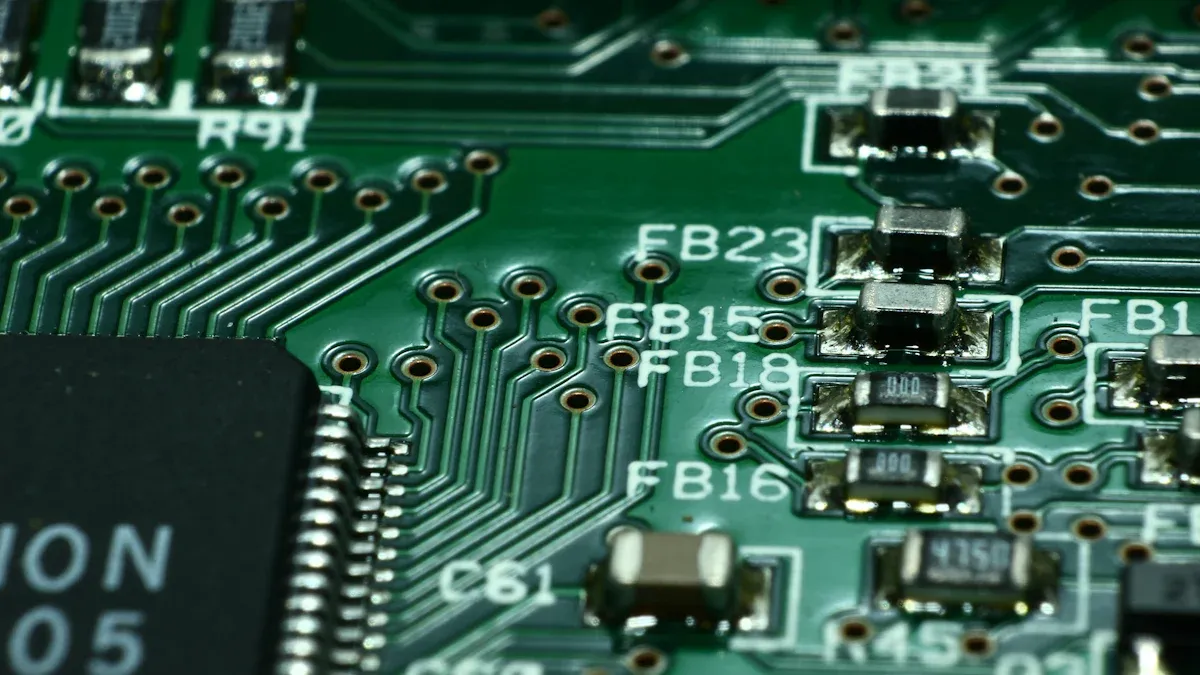
Energy efficiency and reduced power consumption
Have you noticed how lights are brighter but use less energy? That’s thanks to SMD modules. These small parts save energy while giving great light. They help lower electricity bills and protect the planet. 🌍
Here’s why SMD LEDs are special:
They use up to 80% less energy than old bulbs.
They meet rules like the EU’s Ecodesign Directive for greener lighting.
The need for energy-saving lights is pushing new tech forward.
Imagine a city like Los Angeles saving $8 million each year by using LED streetlights. That’s smart and eco-friendly. Whether at home, work, or outside, SMD LEDs are leading us to a greener world.
Miniaturization and design flexibility
Ever wonder how gadgets get smaller but still work better? SMD modules make this possible. Their tiny size lets designers create slim, light devices without losing power. This sparks new ideas in display technology.
Check out these cool studies about miniaturization and design:
Study Title | Key Findings |
|---|---|
Thermoformability of Printed Circuits | Combines circuits with flexible designs, cutting weight in cars. |
Repairability of SMDs on 3D Circuits | Stretchable materials make flexible electronics more sustainable. |
Additive Silver Circuits | Better solder joints improve design flexibility. |
SMD Attachment on Printed Ink | Links miniaturization to flexible tech advancements. |
These ideas are changing industries. From smartwatches to car displays, SMD modules make devices smaller and smarter. You’re not just getting compact gadgets—you’re getting advanced ones.
Integration with IoT and smart LED lighting systems
Imagine walking into a room where lights adjust to your mood. This isn’t a dream—it’s real with IoT and SMD modules. Their small size and energy savings make them perfect for smart lighting.
Here’s how SMD LEDs are shaping the future:
They’re key to smart homes, a market expected to reach $53.45 billion by 2025.
Cities use smart lights to save energy and plan better.
They improve comfort with perfect brightness and color for every need.
Cities like Los Angeles save millions yearly with LED streetlights. These systems don’t just light up spaces—they change how we live. From smart homes to connected cities, SMD modules are driving this exciting change.
Enhanced durability and thermal management
Have you noticed some LED lights last longer than others? This happens because of their strength and how they handle heat. SMD modules are made to stay bright for a long time. They use special systems to manage heat well. Let’s explain how this works.
When LEDs get too hot, they don’t work as well. They might lose brightness or even stop working. But SMD technology solves this problem. These modules spread heat evenly, keeping LEDs cool and working better. This helps them last longer, even in tough places.
Did you know? High heat can make LEDs dim and wear out faster. It can also cause damage like peeling layers. SMD modules fix this with smart designs and heat-resistant materials.
Here’s why SMD modules are special:
Smart chip setups: Chips placed evenly on boards spread heat better. This keeps LEDs steady and strong.
Improved heat transfer: COB LEDs, similar to SMDs, move heat 70% faster. This stops overheating and keeps performance steady.
Check out how heat affects LED performance in tests:
Trial | Junction Temperature (°C) | S/N Ratio Improvement (%) |
|---|---|---|
1 | [Value] | [Value] |
2 | [Value] | [Value] |
13 | [Value] | [Value] |
16 | [Value] | [Value] |
These tests show why controlling heat is so important for LEDs. By staying cool, SMD modules last longer and work better.
What does this mean for you? It means SMD LEDs can light your home, office, or outdoor spaces without breaking often. They save you money and time. Their heat-handling skills also make them great for factories or big displays.
With SMD modules, you’re not just buying lights. You’re getting strong, smart, and long-lasting technology.
Applications of SMD Modules in 2025
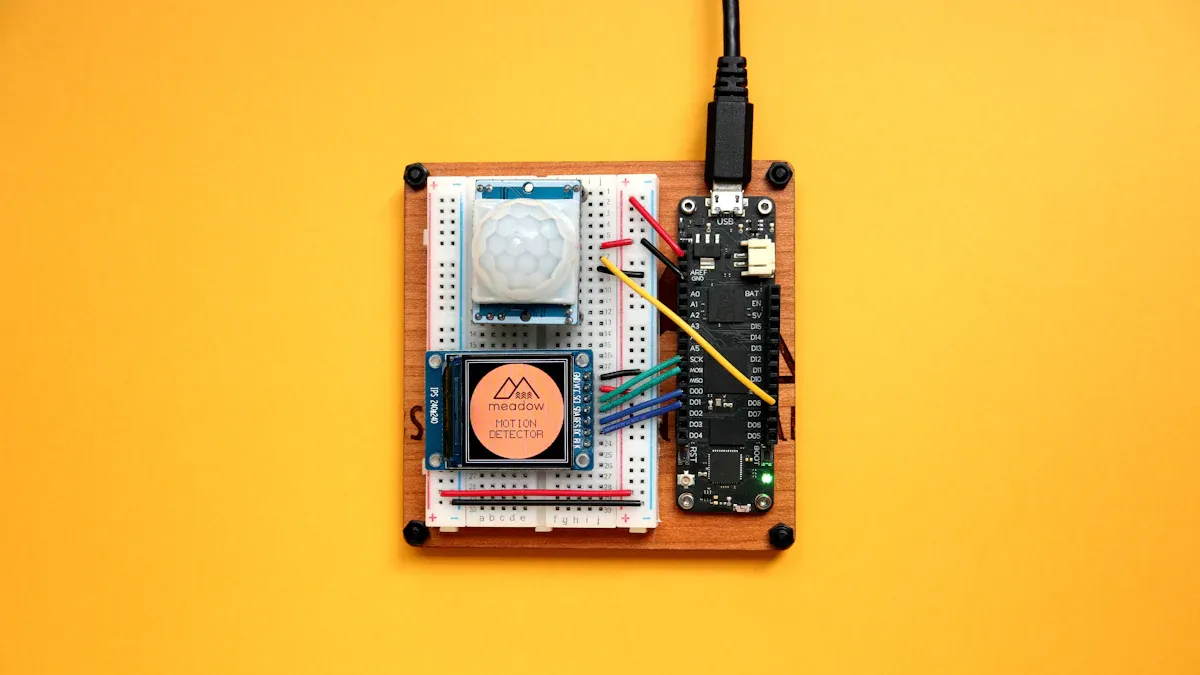
Automotive advancements: Adaptive lighting and displays
Have you seen car headlights that seem smart? That’s because of SMD modules. These small parts help cars light up roads better. Adaptive lights change brightness and direction based on the road. In fog or on dark highways, they help drivers see clearly without causing glare.
SMD modules also improve car screens. Dashboards and heads-up displays (HUDs) are sharper and brighter. They use less energy too. Imagine a dashboard showing speed, maps, and music on one clear screen. This is possible thanks to display technology improvements.
Fun Fact: Some luxury cars now have see-through LED screens in their HUDs. They mix cool designs with useful features.
As cars get smarter, the need for SMD-powered lights and screens will grow. By 2025, you’ll see these in electric and self-driving cars.
Consumer electronics: Smartphones, TVs, and wearables
Think about your phone, TV, or smartwatch. Their amazing screens work because of SMD modules. These parts make devices thinner, lighter, and more colorful. They don’t just work well—they look great too.
Here’s why SMD modules are important for screens:
The market for SMD LED displays may grow from $20.03 billion in 2024 to $32.5 billion by 2032.
Asia, home to big tech companies, might hold 40% of the market in 2023.
This shows how much we depend on screens daily. Whether watching a movie on a 4K TV or checking your smartwatch, SMD modules make it better. They also help create new things like see-through screens and interactive walls.
Pro Tip: When buying gadgets, pick ones with SMD LED displays. They last longer and save energy.
Smart LED lighting: Residential and commercial uses
Imagine lights that change based on your mood or the time. This is the future of smart lighting, made possible by SMD modules. These parts make lights smarter, brighter, and more efficient at home or work.
Here’s how SMD modules improve smart lighting:
They give bright light while using less energy.
Better LED drivers make lights last longer, saving money.
Smart systems turn lights on only when needed, cutting waste.
Check out some top energy-saving LED series:
LED Series | Lumen Output (lumens per watt) | Year Developed | Certifications |
|---|---|---|---|
ZGSM H series | 125-150 | 2013 | CE, UL |
ZGSM K series | 160 | 2016 | CE, ENEC |
ZGSM Rifle series | 170 | 2020 | CE, ENEC+ |
ZGSM Falcon series | 170 | 2022 | CE, ENEC |
These lights are changing homes and businesses. Picture a hotel lobby with lights that shift during the day. Or an office where lights dim when no one’s there. With SMD modules, this is now common.
Did You Know? Smart LED lights with SMD modules can cut energy use by 50%. They’re great for the planet and your wallet.
By 2025, smart LED lights will be everywhere. They won’t just light rooms—they’ll create spaces that adapt to you and save energy.
Industrial applications: Manufacturing and signage
Have you thought about how factories and signs are improving? SMD modules are a big reason for these changes. Their small size and efficiency make them perfect for modern factories and signs.
In factories, SMD modules are changing how things are made. New 3D printing and smart machines place parts better. This cuts waste and speeds up making new products. Robots called cobots help workers by making tasks easier and safer.
Here’s how SMD modules are helping factories and signs:
Evidence Description | Impact on Manufacturing and Digital Signage |
|---|---|
3D printing and smart machines improve part placement. | Cuts waste and makes new products faster. |
AI tools design better circuits and find problems early. | Makes SMD modules work better and last longer. |
Cobots make tasks easier and safer for workers. | Increases productivity and keeps workers safe. |
For digital signs, SMD modules create bright, clear displays. They use less energy, so they’re great for billboards, stores, and train stations. They’re also tough, so they work well outside in bad weather.
Pro Tip: If you work in factories or signs, try using SMD modules. They save time, energy, and money while working better.
The role of SMD LEDs in the LED display market
The LED display market is growing fast, and SMD LEDs are leading the way. Their flexibility and efficiency make them the best choice for amazing visuals everywhere.
Why are SMD LEDs so important? They’re making digital signs and clear displays more popular. From sports arenas to stores, SMD-powered screens are bright and sharp. New materials and better ways to make LEDs are also improving their performance and energy use.
Here are trends shaping the LED display market:
Key Factors | Description |
|---|---|
Growing Demand | More people want digital signs and clear displays. |
Technological Advancements | New materials and methods make displays better and more efficient. |
High Versatility | SMD LEDs work for indoor and outdoor screens, stores, and events. |
Energy Efficiency | They use less power and are better for the environment. |
Competitive Market | Companies keep improving to stay ahead in the market. |
Consumer Preferences | People want high-quality, flexible screens for modern needs. |
Regional Growth | Different areas grow at different speeds based on local needs. |
SMD LEDs also meet the need for flexible, high-quality screens. They work well indoors and outdoors, making them useful everywhere.
Did You Know? The LED display market is expected to grow a lot soon because of SMD-powered screens.
By choosing SMD LEDs, you’re getting the latest technology. You’re also helping create a greener and more exciting future.
Future Trends in SMD LED Technology
Sustainability and renewable energy integration
Have you thought about how lights can help the planet? SMD LEDs are making lighting greener and smarter. These small parts use less power and last longer. They work well with solar panels to create eco-friendly lighting systems.
Cities are already using these ideas. Solar streetlights with SMD LEDs are showing up in many places. They save money and lower carbon pollution. At home, smart lights with SMD modules adjust brightness to save energy. These changes show how lighting is becoming better for the environment.
Micro-LED and quantum dot technologies
Imagine screens so clear they look real. That’s what micro-LED and quantum dot tech can do. Micro-LEDs are smaller than SMD LEDs, making displays sharper. Quantum dots improve colors, making them more vivid and lifelike.
These new technologies are changing screens everywhere. You’ll see them in TVs, smartwatches, and even VR headsets. They make colors brighter and details sharper. Soon, your favorite gadgets will have these amazing features. The screen industry is excited about these cool upgrades.
AI-powered displays in the LED display market
What if your screen could think and adapt? AI-powered displays are making this possible. These smart screens change brightness or show content based on your needs. AI is improving how we use LED displays.
You’ll see these screens in homes, offices, and public places. For example, billboards now use AI to show ads that match the audience. In gaming, AI creates worlds that react to your moves. This isn’t just about better pictures—it’s about making screens interactive and fun.
Pro Tip: Watch for these trends. They’re changing how we use technology and enjoy displays.
New uses in healthcare and AR/VR
Have you thought about how tech is changing healthcare and virtual reality? SMD modules are a big part of these changes. Their tiny size and smart design make them great for new medical tools and cool AR/VR systems.
In healthcare, SMD modules help with medical pictures and tests. You’ll see them in things like small ultrasound machines and clear monitors. These screens help doctors see better images, making it easier to find problems quickly. Health trackers also use SMD LEDs to check your heart, oxygen, and sleep. They’re small, strong, and save energy, so they’re perfect for daily use.
AR/VR is another area where SMD modules are amazing. Imagine walking into a virtual world that feels real. SMD-powered screens make this happen. They show sharp pictures and bright colors, making games, learning, and therapy better. For example, AR glasses with SMD LEDs can help doctors see surgeries or let students visit old places in 3D.
The screen industry is excited about these changes. As the LED display market grows, you’ll see more cool uses for SMD modules. From better medical tools to real-like virtual worlds, these small parts are changing how we use tech.
Did You Know? AR/VR systems with SMD-powered screens help treat fears and PTSD. They create safe spaces for people to face their fears.
By 2025, healthcare and AR/VR will use SMD modules even more. Whether helping doctors save lives or making virtual worlds more real, these technologies are shaping the future.
The story of the SMD module is amazing. It has changed how we use screens and technology. Starting from simple LED designs, it now powers modern displays. These displays are sharper, flexible, and better for the planet.
Many industries now use these modules because they save energy and are easy to design with. By 2025, Asia-Pacific will make over half of all SMD modules. The market will grow to be worth more than $20 billion, increasing by 8% each year. Car technology, like smart lights and displays, will grow even faster at over 10%.
The future of SMD modules is full of exciting possibilities. New ideas like see-through screens and AR/VR tech will change how we live and work. As the world focuses on being eco-friendly, these modules will help create smarter and greener solutions for everyone.
FAQ
What makes SMD modules special compared to older LEDs?
SMD modules are smaller and work better than older LEDs. They allow creative designs and make displays brighter. You can see them in gadgets, lights, and big signs like billboards.
How do SMD modules save energy?
SMD modules use smart technology to need less power but shine brighter. This lowers electricity costs and helps the environment. They’re great for homes and businesses.
Can SMD modules be used outside?
Yes, SMD modules are strong and can handle bad weather. They’re great for outdoor uses like streetlights, signs, and big LED screens. Their toughness makes them dependable.
Do SMD modules work with smart home systems?
Yes! SMD modules easily connect with smart home systems. They let you change brightness, colors, and save energy. This makes your home smarter and more eco-friendly.
Which industries use SMD modules the most?
Industries like cars, electronics, and factories use SMD modules a lot. They’re also key in the LED display market, making clear screens for inside and outside use.
See Also
Exploring RGB LED Modules And Their Uses In 2025
The Impact Of LED Modules On Signage Illumination
Discovering Current Innovations In Edgelight LED Solutions
The Reasons Behind The Popularity Of 12V LED Modules
Key Differences Between COB And SMD LED Strips

